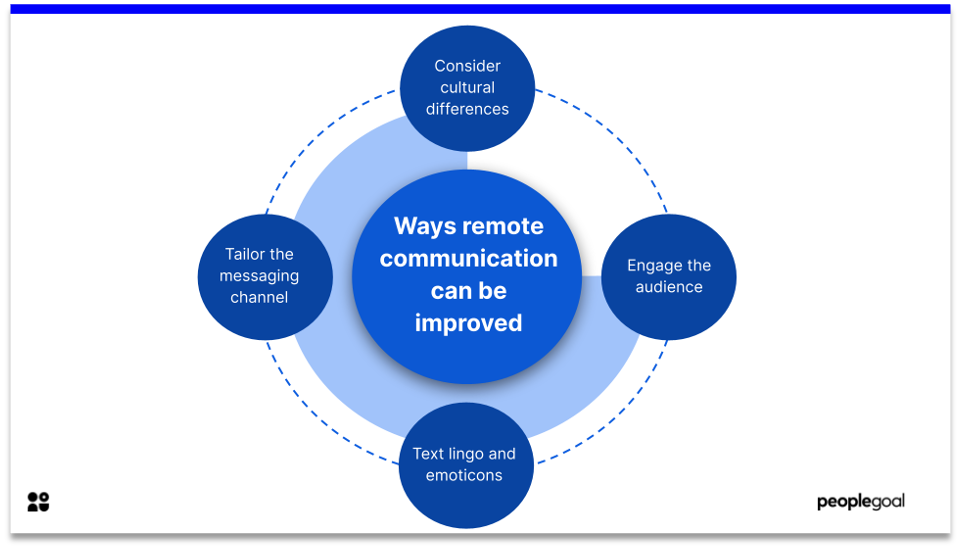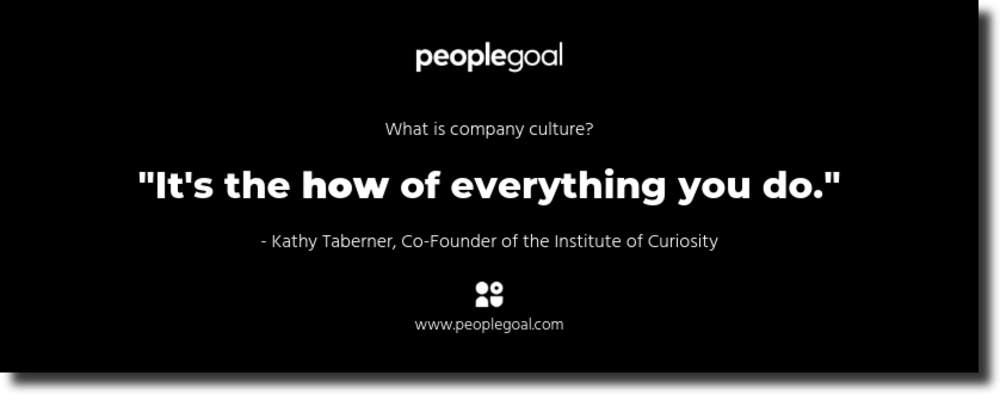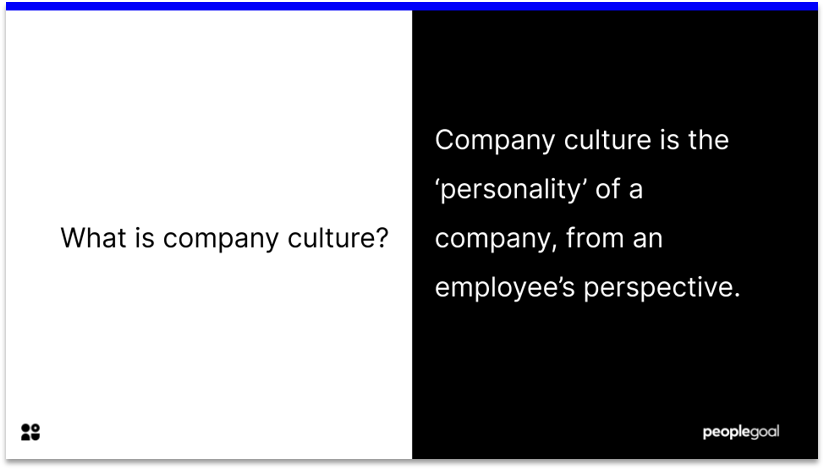Recently, we have come across a number of online quizzes with the question; Workplace communication can suffer when individuals… and it piqued our curiosity!
What is Workplace Communication?
Workplace communication is the means by which employees exchange information and ideas.
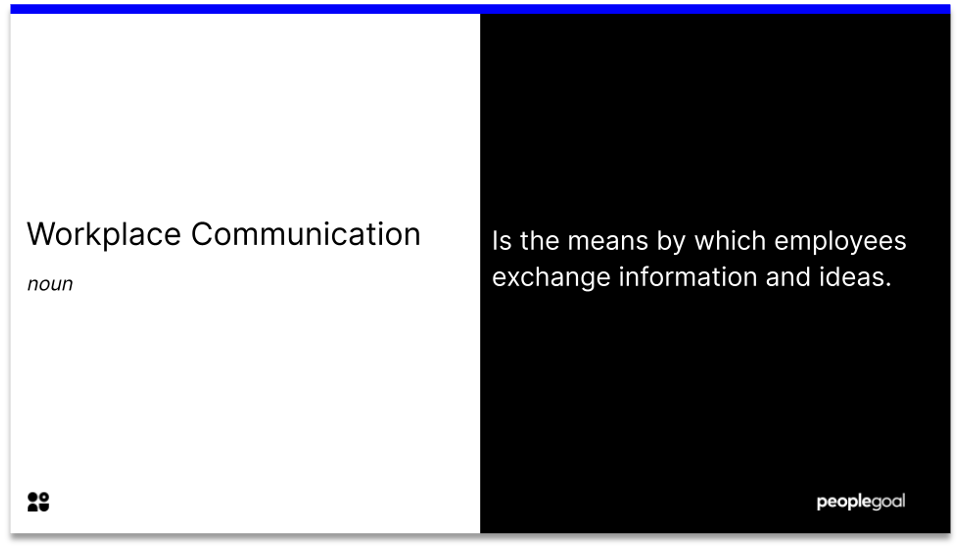
Effective workplace communication is essential for employee experience and maintaining company culture. It can also positively influence employee productivity and the overall performance of a business.
The online quizzes, mentioned earlier, provided the same options to improve this workplace communication breakdown:
- Consider cultural differences
- Attempt to engage the audience
- Use text lingo and emoticons
- Tailor the message channel

However, it later states that emoticons and lingo can in fact break down workplace communication. So, to make this clearer for you we have investigated the ways workplace communication breaks down remotely and ways to maintain good communication across your organization. These tend to improve the different communication strategies involved in your remote teams.
Lingo and emoticons
There is no excuse for lingo. Yes, it may feel natural if you are particularly close to a colleague especially if that is the style of verbal communication you would use if face to face.
Yet, due to the nature of written communication, it may lead to a poor exchange of information and ideas. Particularly, if that team member is from another culture with differing lingo or use of emoticons. Moreover, emojis can be interpreted as unprofessional and impolite depending on the nature of the business you are working for.
On the other hand, emoticons can be a great source of motivation for your employees. We love a good use of an emoji every here and there. Plus, emojis can save a lot of time if used well. There is no need to write a whole sentence if you can just send thumbs up as an agreement with your colleague, manager, or direct report.
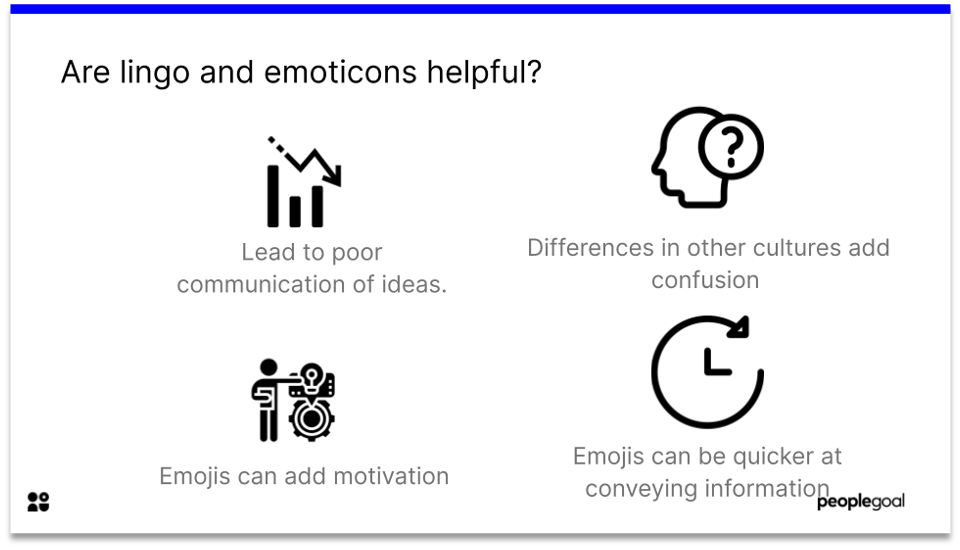
Thus, in some instances ( depending on your work environment) emoticons can improve communication and be a necessary communication tool.
Additional Mistakes to avoid maintaining effective communication
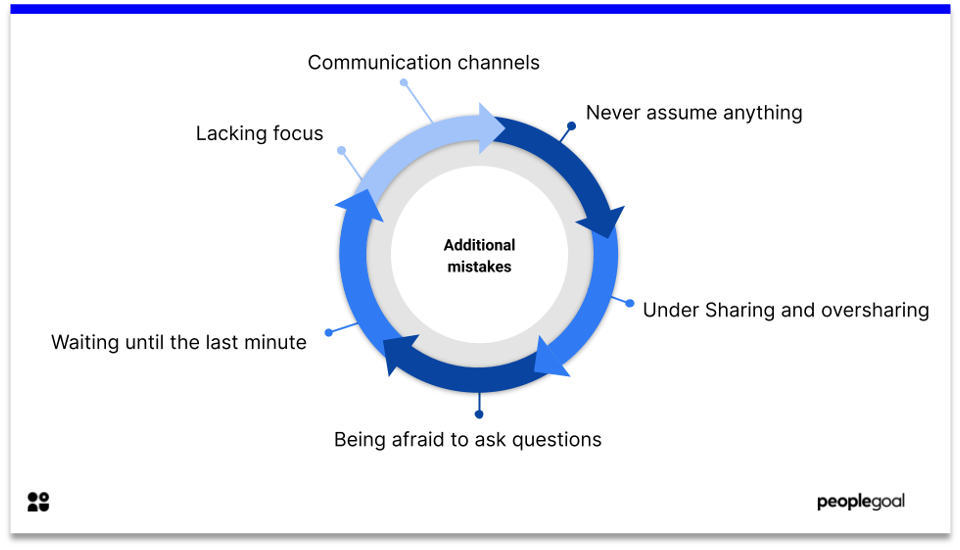
Never assume anything
It is easy to take information for granted once you have been working for a company (or on a project) for a while. You get the impression, that it is natural and obvious. However, in a society with a growing number of remote, contract, and part-time employees making sure everyone is on the same page and updated with the most recent information is a key to run a successful business.
Plus, we all know how painful it is when you feel left out, which can have a negative impact on your company culture and motivation levels of your employees. Therefore, you should make an effort to ensure all team members are up to date this should increase employee engagement through every employee feeling included.
Under sharing (& Oversharing)
Similarly, our previous point, if you want to make your employees feel valued and part of the organization, you need to share the information with them. Furthermore, collaboration and teamwork are vital for developing new ideas and innovation in your company – facilitating team building.
You will never utilize the potential of your workforce if you do not keep them in the loop of what is going on in the business, and to do so, you need to communicate the information. On the other hand, for communication to be effective you should avoid waffles and keep the message clear and to the point. Therefore, as an employer keep up to date with your communication skills and understanding how much you should share.
Being afraid to ask questions
We have all been there, you join a new company and miss a meeting. Sometimes it can be difficult to ask questions to get you back up to speed. The important thing is that your employees know that the work environment celebrates questioning and gaining a deeper understanding. This can be ensured by helping your senior members to maintain an open mind through training and seminars.
If you do not want to confront the whole team, book a one-on-one meeting with your manager. PeopleGoals one-to-one app is great for this! Its automated process through schedules and rules ensures that every employee automatically has a 1:1 with their supervisor. This means you are never left out of the loop for too long.
Waiting until the last minute
In line with being afraid to ask questions it is easy to postpone confronting your manager or team until the very last minute when you desperately need more information to progress. However, if you wait until the last minute it is not going to help anyone, and you are exposing yourself to more stress than you need to.
Plus, what are the chances you are going to meet your deadline if you ask about what you need to do too late? By staying on top of your communication line with your superiors you can increase your productivity by having fewer unsolved questions and problems.
Lacking focus
Lacking focus is the other side of the coin of ineffective communication. If you do not clearly communicate the purpose and objective in your message it is likely your employees will not understand what they need to do and how to achieve company objectives, they will lack focus themselves, have to ask more questions, and probably become less motivated and more stressed than they need to be.
Another way employees can lack focus is through the work-time usage of social media. By connecting with their out of work friends in work time it limits the efficiency of their communication.
Limit this by looking into making a social media code of conduct. Get some inspiration from our templates!
communication Channels
We cannot decide what is worse; too many communication channels or not enough. You should always ensure your employees are clear on the use of communication channels in the company and know where to find or seek all the information they may need. You should include a private messaging platform such as Slack, a project management platform for planning, task management, issue tracking software, calendar, and an internal website or platform such as Dropbox with all the branding and other resources your team might need.
It is important to bear in mind the well-known; communication is key in any relationship. In order to maintain effective communication and allow your employees to express themselves and share their opinions, it is important they feel they can trust the business they are working for. Safe space and open communication culture should be an objective of every successful leader.
Workplace Communication is the best when individuals…
It is apparent that there are many ways communication in the workplace suffers through remote work. But hopefully by our outlining of the key mistakes you and your teams will be able to avoid them and have the best lines of communication possible. This in turn should increase the performance of your whole business.
Ready to 3x Your Teams' Performance?
Use the best performance management software to align goals, track progress, and boost employee engagement.
